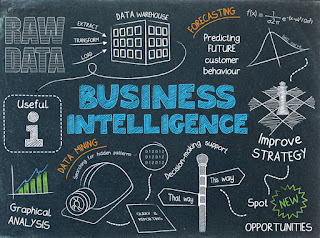New-age businesses are grappling for
the best approaches to harness and obtain value from big data. Enabling the users
to either watch the story or tell their story is the key to obtaining value
with the advanced big data
visualization tools, as the data sets will grow constantly.
With terabytes and petabytes of
data deluging business enterprises, the architectures and infrastructures are getting
over-coordinated to store, manage, share and analyze big data. IT professionals
are less equipped to handle the rising demands for different types of data, dedicated
reports for strategic projects and unplanned analytics.
The conventional business intelligence solution on big data,
where IT professionals showcases segments of data which are easy to manage and
analyze or builds pre-visualized templates that accepts certain sorts of data
for charting and graphing miss the potential to incarcerate deeper meaning to allow
pro-active or even prognostic decisions from big data.
With massive pressure to deliver
results, user groups are increasingly detouring IT. They obtain applications or
customize it without any technical knowledge. Few professionals go so far as to
obtain and provision their own infrastructure to speed up data collection, data
processing and data analysis. This time-to-promote hurry creates data silos and
prospective governance, regulatory and compliance hazards.
Users that are making use of
cloud-based services increasingly on their devices cannot understand why they
are facing several difficulties while accessing the corporate data. This
becomes practically impossible, unless the users have technical abilities to
integrate different data sources manually.
Unveiling the Primary Steps
to Envisage Big Data Success:
Architecting from customer’s outlook
through big data visualization tools is very important for top management to
visualize the big data success with the help of improved and speedy insights
that improve decision results. A primary advantage is that how these tools alter
project delivery.
As they allow value to be
visualized quickly by prototypes and test cases, you can easily validate models
at an affordable price prior to algorithms are built for production surroundings.
The advanced big data visualization tools deliver a common language through which
business enterprises and customers can communicate.
The business enterprises require delivering
data in a much more responsive manner. The below mentioned guidelines can assist
business enterprises become integral to how you deliver users access to big
data proficiently:-
- Strive for Context: The professionals analyzing data must have a comprehensive understanding about the data sources that will be consuming the data and what are their goals to recognizing the information. Without building context, big data visualization tools become less valuable.
- Showcase Evocative Outcomes: Conspiring pointers on a graph or chart for analysis gets even tougher while managing huge data sets of structured, partially-structured and unstructured data. One approach to determine this problem is to group data into a higher-level view where small groups of data are uncovered. Through clustering the data collectively, users can more efficiently view the data.
- Strategize Speed And Scale: To appropriately allow big data visualization tools, business enterprises should recognize the data sources and decide where the data will live. This must be decided through the receptive nature of the data. In a private cloud, big data must be categorized and indexed for quick search and analysis. Grouped architectures which leverage in-memory and analogous processing technologies are extremely effective nowadays to look at large data sets instantly.
- Guarantee Data Quality: While all the big data hype is focused on the volume, speed and diversity of data, business enterprises must focus on the legitimacy and value of the data more deeply. Big data visualization solutions and the insights they generate are just as good as the quality and reliability of the data models that they are working with. Organizations must integrate data quality tools to guarantee that data feeding at the front end is as clear and understandable as possible.
- Managing Outliers: Graphical representations of big data through these tools can reveal the trends and outliers way quicker compared to the conventional tables having numbers and content. While working with extremely huge data sets these outliers get difficult to navigate. Either you must remove the outliers from the data or develop a separate chart only for the outliers to help the users draw conclusions from visualizing the data and outliers distribution. Separating outliers might assist you in revealing previously unnoticed risks or opportunities, like identifying fraud, changes in market outlook or new key indicators!
The Future of Big Data
Visualization:
Big data visualization is
growing from the conventional charts, heat maps, histograms, graphs and scatter
plots utilized to showcase numerical values which are then assessed against single
or multiple dimensions.
With the trend toward hybrid company
data structures which interconnect conventional structured data generally accumulated
in a data warehouse with unstructured data obtained through a wide assortment
of sources enables assessment against much wider dimensions.
Eventually, business enterprises can observe better
aptitude in the way these tools index outcomes, observe better dashboards with
game-style graphics and more analytical qualities to foresee user data requests
through customized memory caches for supporting performance.







No comments:
Post a Comment